Trees in Adur and Worthing
Welcome to our webpage dedicated to information, facts and figures about the thousands of trees that can be found across Adur and Worthing.
Take a look below to find out more about identifying trees, planting your own, obtaining funding to help plant trees, and much more.
How to identify trees
Have you ever noticed a particularly beautiful tree, but didn't know what kind of tree it actually was? All trees have identifiable features that act as clues to tell you what they are - you just need to know what to look out for. Here are some tips to get your started:
- Look at the leaves or needles. Is it a broadleaf or conifer (usually with needles or scales)?
- Take notice of the surrounding area; some species are more likely to grow near water, in scrubland, parkland or in woodland.
- Piece the clues together, including the overall shape and size of the tree, bark, leaves or needles, flowers, fruits, leaf buds and twigs.
The more features you can see, the more accurate your identification will be.
Photo: Ascer griseum, paperbark maple, at Worthing's Highdown Gardens
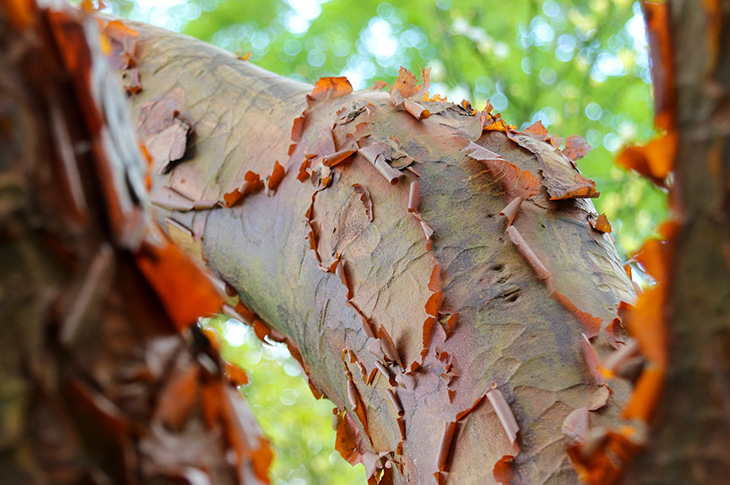
You can use the following links to help you identify trees:
- Tree identification - on the Woodland Trust website
- Tree identification - on the Woodlands website
- Tree identification - on the Natural History Museum website
And for children:
- Tree identification for kids - printable guides - on the Woodland Trust website
- Tree identification and activity sheets for kids - on the Tree tools for schools website (part of the Woodland Trust)
Or give the British Tree ID app by Woodland Trust a go, it's completely free and acts as an A-Z tree guide in your pocket, see:
Video: Identifying trees with the Woodland Trust Tree ID app
How to plant a tree
What could be more rewarding than planting a tree and watching it grow over the years?
Never planted a tree before? Don't worry we've got some basic instructions to get you off to a good start.
Equipment needed:
- Tree in a container
- Bucket
- Watering can
- Spade and fork
- Stake and tie
- Tree guard or spiral
- Mulch (organic matter like chipped bark)
Time needed:
- 60 mins
Photo: newly planted sweet chestnut tree inside a tree guard
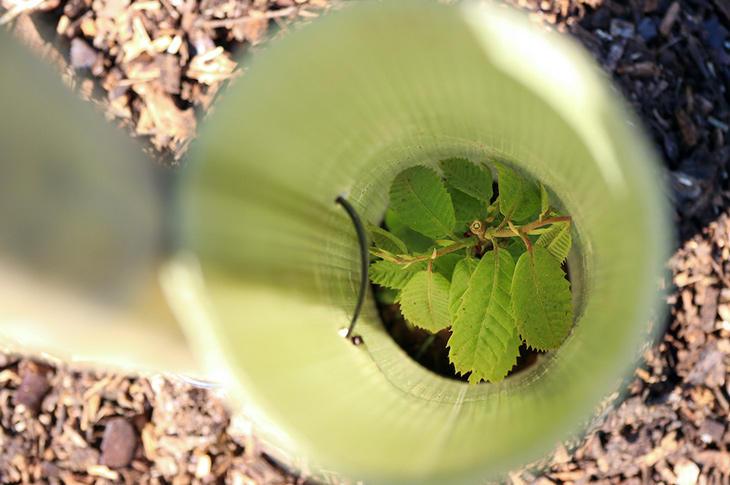
Before you start
Have a think about the eventual height and spread of the tree you plant - check labels or look for free information about trees on the RHS website.
The best time to plant is usually between October and April.
Step-by-step guide to planting your tree:
- Dig a hole three times as wide as the pot and the same depth
- Loosen the soil around the hole with a fork
- Thoroughly soak the root ball in water before planting - standing it in a bucket is good for this
- Loosen the root ball to encourage roots to grow into the soil
- Place the root ball in the hole so that the point where the roots meet the trunk is level with the surface of the soil surface (a piece of wood can be useful to check the level)
- Refill the hole ensuring there are no air pockets around the roots
- Firm the soil around the tree making sure the stem remains upright
- Use a tree guard or spiral if your garden has wildlife visitors who may want to nibble the bark
- Water well
- Add a 5 to 8cm (2 to 3in) layer of mulch - but leave a 10cm (4in) mulch-free collar around base of stem
- Top-heavy trees will probably need staking. Put the stake in firmly at a 45-degree angle - use a hammer to make sure it's secure
- Now attach a tie to your tree to support it in windy weather - garden centres can show you how to do this when you buy it
Diagram: Standard park tree planting specification:

How to look for tree seeds
Seed gathering is fun, free and easy - a great way to help our treescapes continue to thrive.
You don't need to be a tree expert or have any special equipment - just a love of trees and nature and lots of enthusiasm! Top tips:
- If you're planning to collect fruit and seeds to eat (like blackberries), remember that fruit is the property of the landowner, so be careful where you're gathering from
- Don't collect from trees beside busy roads or old industrial sites and make sure children are supervised!
- Make sure you know exactly what you're gathering - some of the most attractive berries are poisonous and easily confused with the ones that are safe to eat!
- Don't gather more than you need - wildlife, like squirrels and birds, rely on fruits, nuts and seeds for food so make sure you leave enough for them to thrive
See:
Photo: Sun shining through trees at Lancing Manor Park
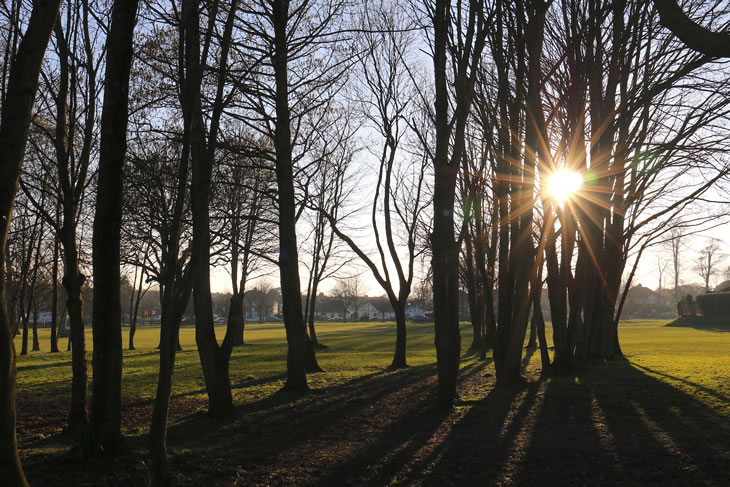
How to choose a tree supplier
When choosing a tree, choose a supplier from reliable sources. A biosecurity certificate will assure the provenance of the tree and minimise the risk of introducing new pest and disease on your site and more generally in the country.
Adur & Worthing Councils use these main suppliers for our trees:
Here are some other additional certified local suppliers:
How to apply for funding to plant trees
The Tree Council actively supports community tree, hedgerow, and orchard projects that boost agricultural productivity and create publicly accessible green spaces that promote physical and mental wellbeing.
To find out more, please see:
How to get more involved
If you want to learn more about trees in your garden, those across Adur and Worthing or even the country, there are some great organisations and groups where you can find more information and support some really important work.
Nationally:
Locally:
- Tree Action website
- More Trees Please - Shoreham 2020 - on Facebook
- Green Tides website
- Town Transition Worthing website
- Brighton Permaculture Trust website
- Friends of Whitebeam Woods - on Facebook
- Eastbrook Community Gardeners - on Facebook
Photo: Bee on Judas Tree at Worthing Crematorium

Planting for colour and climate
Here's a story from our parks team, which tells you a little more about some of the area's trees that really stand out in autumn:
As the sun slides away and the growing season draws to a close our attention is drawn to the largest plants around, our trees, not least by their change in colour but also the new soundtrack, scuffing and crunching leaves underfoot as we take our autumn walks.
Whilst the evergreens like our conifers and pine can hold out over winter it is our deciduous trees that close down to avoid the winter freeze and fill our parks and gardens with their discarded leaf.
It is this transformation that flags the changing season in our plants as much as the fruit and berry.
The longer, colder, nights break down the season's green revealing hidden reds, orange and yellows beneath (photos: Cherry and Persian Ironwood).
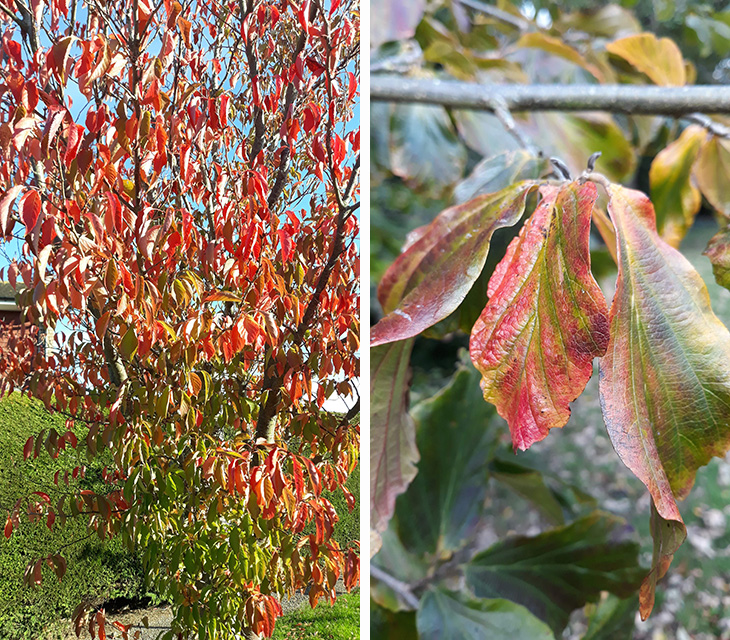
The trees that grow best on the neutral or chalky soils in and around Adur and Worthing tend to give yellows and browns rather than the fiery colours you will find when travelling out to more acid soils of the Sussex Weald.
It occurred to me that it is often the exotic introductions that bring this to our parks and gardens whether it's the orange Paperbark Maple from China at Highdown Gardens, fiery Japanese Cherries at Beach House or Maples from the Continent in Buckingham Park.
However, one of my favourites is the native beech with its coppery golden displays and this is found widely across our district.
Photo: Silver Birch
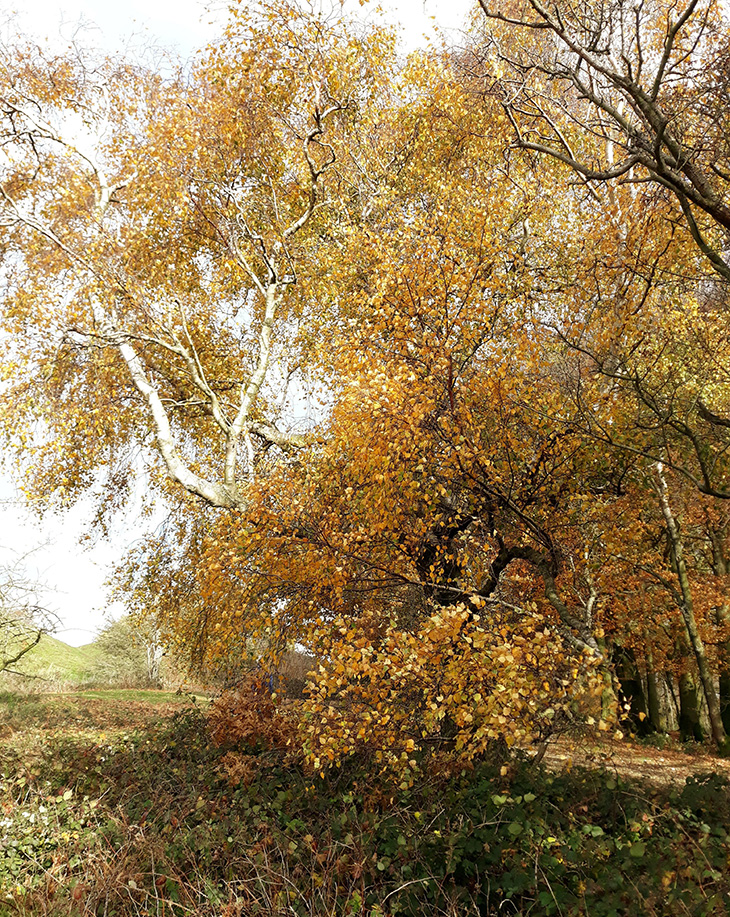
Following Adur & Worthing Councils' declaration of a climate emergency in July 2019 and watching COP26 we can all help improve our environment by planting trees, either in our own gardens or by getting involved in your favorite local public spaces, the UK remains the least wooded country in Europe.
Late autumn to early spring is the best time for planting trees, when they are dormant and less disturbed by the process. Smaller trees I can recommend for autumn colour in gardens and not mentioned above include Persian Ironwood, Snowy Mespilus, any of the Cherries, and one of my favourite all rounders the native Silver Birch. Try one in your front garden to share with everyone.
If you would like to get involved with local tree planting please contact:
Did you know?
Trees are a very valuable natural resource - here are some useful facts about trees:
Why are trees important?
Trees give us oxygen, store carbon, stabilise the soil and give life to the world's wildlife!
Did you know? Trees are the biggest plants on the planet and are the longest living species on earth!
Trees benefit your health
Tree canopies act as physical filters; they trap dust and absorb pollutants from the air. Trees also provide shade from solar radiation and reduce noise. Over 20 species of British trees and shrubs are known to have medicinal properties. Research shows within minutes of being surrounded by trees and green space, your blood pressure drops, your heart rate slows and your stress levels come down.
Did you know? Each individual tree removes up to 1.7 kilos every year.
Trees benefit your environment
Trees absorb carbon dioxide as they grow and the carbon they store in their wood helps slow the rate of global warming. That's not all - they also reduce wind speeds and cool the air as they lose moisture and reflect heat upwards from their leaves. Trees also help prevent flooding and soil erosion, absorbing thousands of litres of stormwater.
Did you know? It's estimated trees can reduce the temperature in a city by up to 7°C.
Trees support wildlife
When trees are young they offer habitation and food to of birds, insects, lichen and fungi. When ancient, their trunks also provide the hollow cover needed by species such as bats, woodboring beetles, tawny owls and woodpeckers.
Did you know? One mature oak can be home to as many as 500 different species.
Trees grow the economy
People are attracted to live, work and invest in green surroundings. Companies benefit from a healthier, happier workforce if there are parks and trees nearby.
Did you know? Research shows average house prices are 5-18% higher when properties are close to mature trees.
Trees protect the future
Soon, for the first time in history, the number of people with homes in cities will outstrip those living in the countryside. Parks and trees will become an even more vital component of urban life.
Ash Dieback: How are we tackling ash dieback in Adur and Worthing?
Ash trees affected with Ash Dieback disease, also known as Chalara (Hymenocyphus fraxinea), are being felled for the safety of the public.
The disease has been slowly spreading and killing Ash trees across Europe and the United Kingdom and results in crown dieback which eventually renders the tree unsafe.
It is expected that the disease will eventually affect up to 90% of Ash trees, leaving only a few which show some disease resistance.
This work has been undertaken as the disease continues to spread through our woodlands, the Council has a felling licence from the Forestry Commission to cover the necessary work.
The felled trees will be replaced with other species including Oak, Beech, Field Maple and Hornbeam and the Community Parks Rangers will be organising planting days to support this.
For more information on the disease see:
Tree walks
Research shows within minutes of being surrounded by trees and green space, your blood pressure drops, your heart rate slows and your stress levels come down. Here's our recommendations for some of the best free walks amongst trees in Adur and Worthing.
The links below take you to locations where you'll find a wonderful walk in nature:
- Lancing Ring - on Google Maps
see also: Lancing Ring Local Nature Reserve - Highdown Gardens - on Google Maps: At Highdown Gardens there are a Junior Tree Trail (including a kid's trunk trail) and Plant Hunter's Trail available to download and follow see:
- Goring Wood (off Titnore Lane) - on Google Maps
Want to go a little further afield?
Why not investigate Forestry England's top spots for autumn in the South East:
You might also be interested in:

Need assistance with this service?
Get in touch:
Parks and Foreshore
Problem with this page?
Page last updated: 05 December 2025

